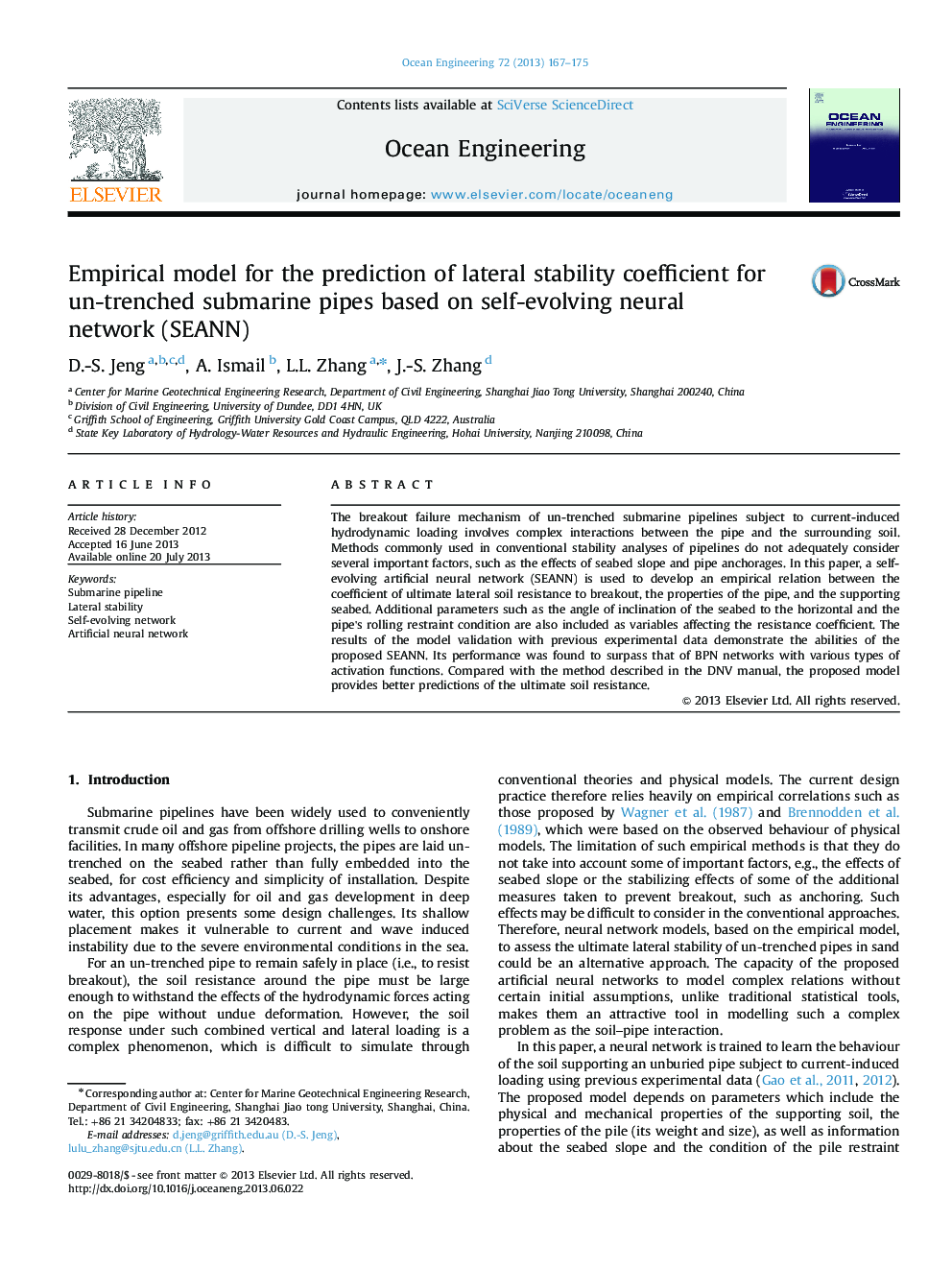| Article ID | Journal | Published Year | Pages | File Type |
|---|---|---|---|---|
| 8066494 | Ocean Engineering | 2013 | 9 Pages |
Abstract
The breakout failure mechanism of un-trenched submarine pipelines subject to current-induced hydrodynamic loading involves complex interactions between the pipe and the surrounding soil. Methods commonly used in conventional stability analyses of pipelines do not adequately consider several important factors, such as the effects of seabed slope and pipe anchorages. In this paper, a self-evolving artificial neural network (SEANN) is used to develop an empirical relation between the coefficient of ultimate lateral soil resistance to breakout, the properties of the pipe, and the supporting seabed. Additional parameters such as the angle of inclination of the seabed to the horizontal and the pipe's rolling restraint condition are also included as variables affecting the resistance coefficient. The results of the model validation with previous experimental data demonstrate the abilities of the proposed SEANN. Its performance was found to surpass that of BPN networks with various types of activation functions. Compared with the method described in the DNV manual, the proposed model provides better predictions of the ultimate soil resistance.
Related Topics
Physical Sciences and Engineering
Engineering
Ocean Engineering
Authors
D.-S. Jeng, A. Ismail, L.L. Zhang, J.-S. Zhang,
